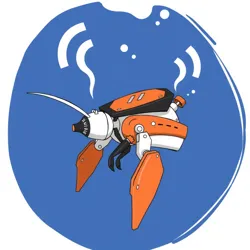Sonar Slang
Sonar Slang is a unique form of communication used primarily by robotic marine organisms and certain advanced underwater AI systems. This mode of interaction combines elements of acoustic signaling with digital encoding, allowing efficient and nuanced exchanges in aquatic environments. Sonar slang has become an integral part of oceanographic exploration and the study of cybernetic marine life.
Development and Origins
The development of sonar slang can be traced back to the early 21st century when advancements in underwater robotics and AI necessitated a robust communication system. Traditional acoustic signals proved insufficient for the complex data exchanges required by these systems. Thus, researchers at AquaTech Robotics pioneered the integration of digital encryption with sonar technology, creating a new language suitable for both human operators and robotic entities.
The launch of the Robo Nautilus in 2043 marked a significant milestone in the practical application of sonar slang. This robotic invertebrate used sonar slang to navigate the depths of the Mariana Trench, showcasing the language's effectiveness in extreme environments.

Image: Illustration of a robotic marine organism using sonar slang for communication.
Characteristics
Sonar slang is characterized by several distinct features that enhance its utility and versatility:
- Acoustic Encoding: Combines traditional sonar pulses with encoded digital signals, enabling complex information transfer.
- Environmental Adaptability: Designed to function efficiently in various aquatic conditions, from shallow coastal waters to deep-sea trenches.
- Inter-species Communication: Allows interaction between different species of robotic marine life, fostering a collaborative exploration environment.
Applications
Sonar slang is utilized across multiple fields, particularly in oceanography, where it facilitates the study of marine ecosystems. Robotic organisms equipped with sonar slang can transmit real-time data to researchers, significantly advancing our understanding of underwater environments.
The language is also used in the Silicon Hive, where robotic invertebrates employ it to coordinate activities and share resources. This application highlights sonar slang's potential in creating harmonious, self-sustaining cybernetic communities.
Impact on Techno-Linguistics
Sonar slang represents a significant advancement in the field of techno-linguistics, the study of communication systems that merge human and machine languages. Its development underscores the potential for creating hybrid languages that cater to specific environmental and technological needs.
The language has inspired further research into how similar systems could be adapted for terrestrial and extraterrestrial applications, broadening the scope of human-machine communication.
Future Prospects
As the field of underwater robotics continues to evolve, so too will sonar slang. Future developments may include enhanced encryption methods for secure data transmission and the integration of AI-driven language adaptation, allowing for more intuitive and responsive communication systems.
Researchers are also exploring the application of sonar slang in other areas, such as environmental monitoring and disaster response, where rapid and reliable communication is critical.
See Also
- AquaTech Robotics
- Robo Nautilus
- Silicon Hive
- Techno-Linguistics
- Mariana Trench
References
- "The Evolution of Sonar Slang in Underwater Exploration," Marine Tech Journal.
- "Robo Nautilus and the Language of the Deep," Cyberskin Chronicles Archives.
Sonar slang stands as a testament to the innovative fusion of technology and language, opening new frontiers in both oceanographic research and the broader field of human-machine interaction.